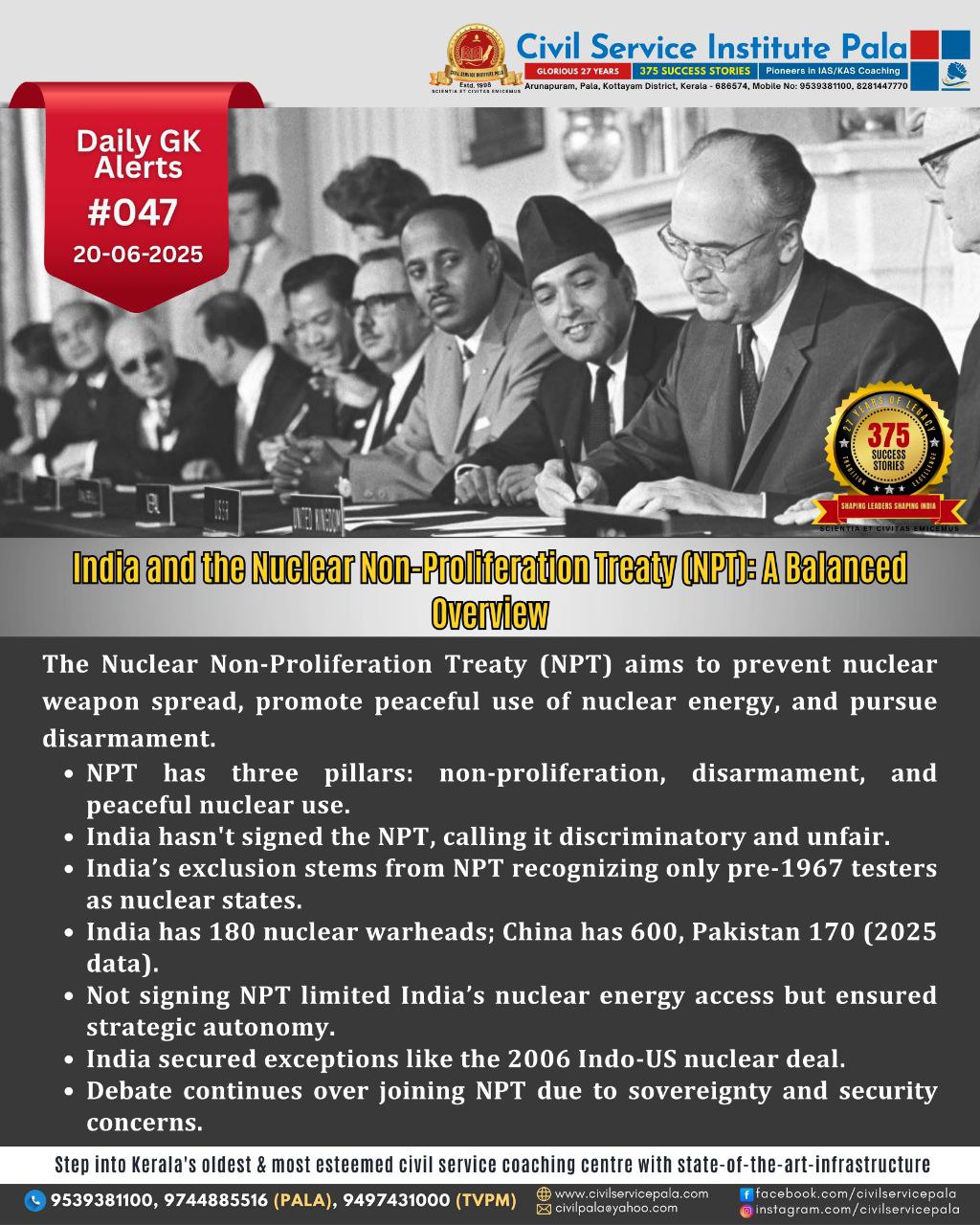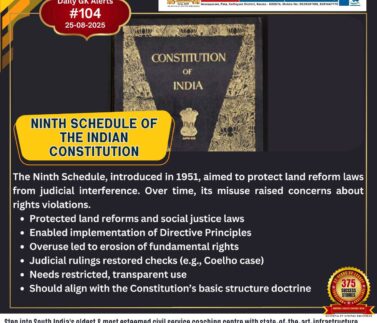
India and the Nuclear Non-Proliferation Treaty (NPT): A Balanced Overview
The Treaty on the Non-Proliferation of Nuclear Weapons (NPT), enforced in 1970, is a globally significant accord aiming to curb the spread of nuclear weapons, promote peaceful uses of nuclear energy, and encourage disarmament. Although nearly all nations are party to the treaty, India remains a notable exception. India’s decision to stay out of the NPT has been shaped by historical events, strategic priorities, and concerns about the treaty’s fairness. This essay explores the structure of the NPT, India’s position, global nuclear trends in 2025, and the arguments for and against India joining the treaty.
Key Pillars of the NPT
The NPT is based on three central commitments:
1. Non-Proliferation – Nuclear-weapon states (NWS) agree not to assist non-nuclear weapon states (NNWS) in acquiring nuclear weapons. NNWS, in turn, commit to not developing or possessing them.
2. Disarmament – All parties pledge to pursue good-faith negotiations towards ending the nuclear arms race and achieving complete disarmament.
3. Peaceful Use of Nuclear Energy – The treaty recognizes the right of all parties to access nuclear technology for peaceful purposes, with safeguards in place to prevent weaponization.
Articles like I, II, III, IV, and VI outline these responsibilities in detail, particularly the role of the International Atomic Energy Agency (IAEA) in monitoring compliance.
India’s Stance on the NPT
India has consistently opposed the NPT on the grounds that it is discriminatory. The treaty only recognizes nations that tested nuclear weapons before January 1, 1967, as legitimate nuclear-weapon states. This includes countries like China but excludes India, despite its scientific contributions and security needs. India views this categorization as ethically unjustifiable and a compromise to its sovereignty.
India’s early calls for universal nuclear disarmament were sidelined, and after China’s nuclear test in 1964, India felt the need to strengthen its strategic autonomy. Since its first nuclear test in 1974, India has chosen to stay out of the NPT framework while developing its own doctrine, including a “No First Use” policy.
Nuclear Developments in 2025
As of 2025, the world has nine nuclear-armed states. The five permanent members of the UN Security Council (USA, Russia, China, France, and the UK) are all NPT signatories. Other nuclear-armed states – India, Pakistan, Israel, and North Korea – remain outside the treaty.
India possesses approximately 180 warheads, slightly ahead of Pakistan’s 170. However, China, with an arsenal of 600 warheads, presents a strategic challenge. Both India and Pakistan are improving delivery systems, with India advancing in canisterised and multi-warhead missile technologies.
Costs and Gains of Staying Outside NPT
India’s refusal to sign the NPT has led to limited access to global nuclear trade, affecting its energy growth. The country’s nuclear capacity remains modest at 6,780 MW. Projects like the Fast Breeder Reactor at Kalpakkam have faced delays, partly due to technology access restrictions.
Yet, India has managed to secure several exemptions. Notable among them is the 2006 Indo-US civil nuclear deal, allowing for nuclear trade under IAEA safeguards. Countries like Australia now export uranium to India under strict conditions.
Arguments for and Against Joining NPT
In Favor:
* Joining could ease trade restrictions and expand access to clean nuclear energy.
* It might support India’s ambitions for a permanent seat at the UN Security Council.
* It may improve diplomatic relations with nuclear-armed states under the NPT.
Against:
* India would have to sign as a non-nuclear-weapon state, undermining its status and sovereignty.
* The treaty fails to ensure equal treatment for all, protecting only the pre-1967 nuclear powers.
* India’s strategic deterrence, especially against China and Pakistan, could be compromised.
Conclusion
India’s nuclear path has been shaped by its commitment to strategic independence and skepticism toward unequal global treaties. While the NPT remains central to global arms control efforts, its limitations are evident. India has managed to strike a balance through responsible nuclear behavior, even outside the treaty. Whether or not it joins the NPT in the future will depend on reforms that make the treaty more inclusive, equitable, and reflective of modern geopolitical realities.



